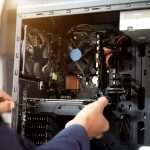Toyota Faces Major Recall Over Rear-View Camera Failure — And the Financial Risks Are Growing
Toyota and Lexus are recalling more than one million vehicles in the U.S. due to a rear-view camera display failure that may cause images not to appear while reversing. The recall spans 2023–2025 models, with repairs offered at no cost. The issue raises wider financial and legal implications as automakers become increasingly dependent on software-based safety systems.
Toyota’s Reliability Image Is Tested by a Growing Tech Challenge
Toyota, long considered the benchmark for reliability in the automotive industry, is now facing heightened scrutiny after announcing a recall affecting more than one million Toyota and Lexus vehicles. The issue centers on rear-view cameras that may intermittently fail to display their video feed, a malfunction traced to a faulty electrical connector in the infotainment display unit.
This recall impacts some of Toyota’s most popular models, including the Camry, Corolla, Prius, Highlander, and RAV4, as well as the Lexus RX and ES lineups produced between 2023 and 2025. For many drivers, especially those who rely heavily on camera assistance when reversing, the system failure poses a direct safety concern.
Rear-view cameras have been federally mandated in all U.S. vehicles since 2018, meaning Toyota is not only correcting a functional flaw — it is addressing a compliance failure with national safety standards.
What Models Are Affected?
The recall covers approximately 1.1 million vehicles, including:
-
Toyota Camry (2023–2025)
-
Toyota Corolla (2023–2025)
-
Toyota RAV4 (2023–2025)
-
Toyota Prius (2023–2025)
-
Toyota Highlander (2023–2025)
-
Lexus RX and ES Series (2023–2025)
Owners will receive notification letters and can verify their vehicle status via Toyota’s recall site or the NHTSA VIN lookup tool.
Repairs will be conducted free of charge at Toyota dealerships, where technicians will inspect and replace the faulty display connectors or units entirely if necessary.
Reputation, Trust, and the Financial Stakes
While Toyota will absorb the repair costs — projected to reach tens of millions of dollars — the larger concern is brand trust. Toyota has built decades of loyalty around the perception that its vehicles are dependable, uncomplicated, and engineered to last.
Today’s vehicles are no longer purely mechanical machines. They are digital platforms, integrated with software systems that must communicate flawlessly. A single faulty connector now has the potential to compromise a federally mandated safety feature.
Automotive safety researcher Dr. Sam Abuelsamid of Guidehouse Insights summed up the industry challenge:
“Software reliability is now as fundamental to vehicle safety as brakes or airbags. If the digital system fails, the safety system fails.”
For Toyota, protecting that sense of reliability is priceless — and vulnerable.
Legal Risk: Safety Recalls Are Increasingly Expensive
Because this recall involves technology tied directly to driver visibility and accident prevention, Toyota could face broader liability risks if any collisions are linked to the malfunction.
The potential legal exposure includes:
-
Claims involving injuries or property damage
-
Regulatory penalties if the issue is found to have been known before the recall
-
Class-action lawsuits alleging delayed corrective action
According to analysis reviewed by CEO Today, auto liability cases involving failed digital safety features have climbed significantly in the past five years, mirroring the rise in software-dependent vehicle systems.
What This Signals About the Future of Car Manufacturing
Modern vehicles rely on complex software ecosystems, and:
-
One small electronic failure can disable a major safety function.
-
Component supply chains now include third-party software providers.
-
Automakers must balance innovation speed with fault-proof testing.
This recall is part of a broader trend: car reliability is no longer judged only by engines and transmissions, but by screens, sensors, and code.
What Toyota Owners Should Do Now
Owners of affected vehicles should:
-
Confirm recall eligibility via the VIN lookup.
-
Book a service appointment promptly — repairs are free.
-
Avoid reversing in tight or crowded areas if the camera display flickers or freezes.
Conclusion
Toyota remains one of the world’s strongest and most trusted automotive brands, but this recall underscores the new reality of car ownership: the future of vehicle safety is digital, and digital systems must be just as reliable as mechanical parts. As cars evolve into rolling computers, automakers must ensure that technological progress doesn’t compromise safety — or consumer trust.














